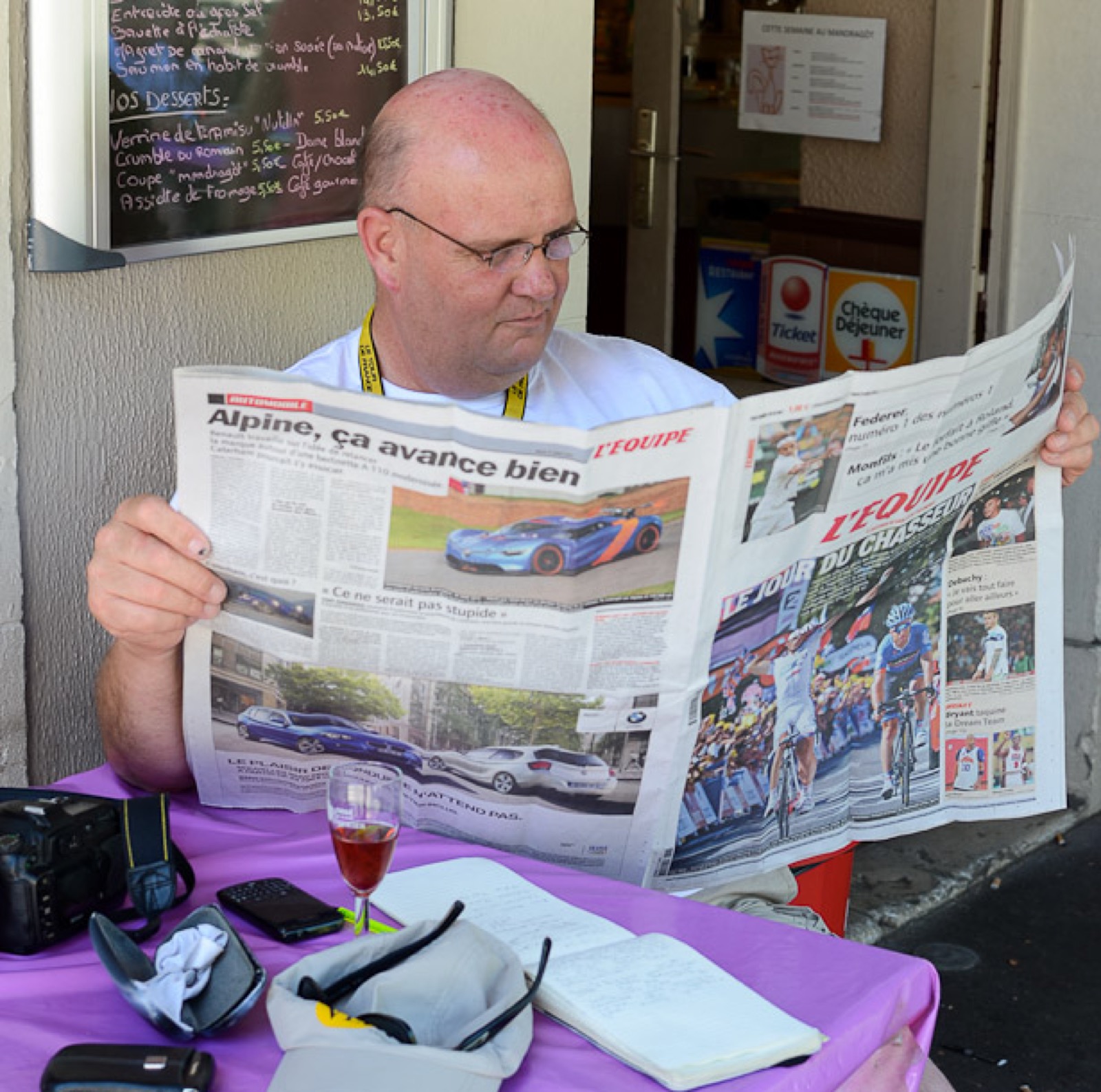Britain has always had a fine tradition in the UCI Men’s Individual Pursuit World Championships with the late Norman Sheil twice world amateur champion; then the legend that is Hugh Porter picking up the baton in the professional event followed by names like Tony Doyle, Colin Sturgess, Chris Boardman, Graeme Obree and Bradley Wiggins.
But a man who twice stood on the world professional pursuit and Commonwealth Games pursuit podiums as a silver medallist has largely been forgotten; perhaps because he plied most of his trade across the Atlantic in the USA?
Shaun Wallace was a multiple British champion, twice Worlds silver medallist and three times a Commonwealth Games silver medallist as well as a world record holder on two occasions.
High times we caught up with the man; he was at home in San Diego where he settled 22 years ago to ‘escape the winters.’
Your first British title was the junior Kilometre in 1979, Shaun – how many more since?
“I’d need to count the jerseys but not a huge number, the last Nationals I rode for a long time were in 1984, I was in the States after that until and didn’t ride them again until ‘95/’96.
“I’m always humbled by people remembering my performance from way back then.”
[VeloVeritas checked Shaun’s National Championship palmarès from that era: ’79: junior Kilometre 1e, junior Pursuit 3e; ’80: senior Pursuit 3e; ’81: Kilometre and Pursuit 2e; ’82: Pursuit 1e; ’83: Pursuit, Kilometre and 20 Kilometre 1e; ’84: Pursuit 2e, Kilometre and 20 Kilometre 1e. ed.]
Kilometre and Pursuit champion in the same year, not the norm back then?
“I remember the championship organisers ribbing me a little because they had to re-schedule things to allow me to ride both, now it’s much more common but back then the Kilometre was the province of the ‘pure’ sprinters.”
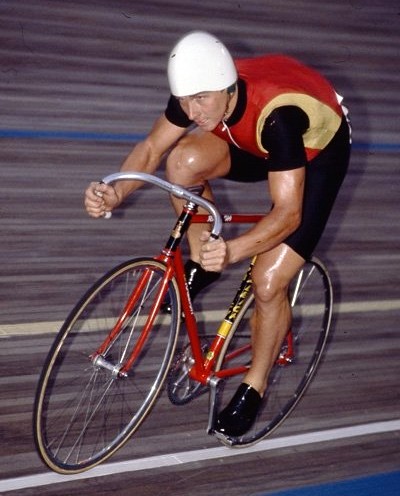
Your first big international result, silver in the Brisbane, Commonwealth Games Pursuit in 1982 behind Aussie ‘home boy’ Mike Turtur.
“That was a very important result for me; after the World at Leicester where I felt I failed I got my physical and mental act together and was actually leading at the bell in the final at Brisbane – but that was the biggest crowd I’d ever ridden in front of and there was a huge roar following him round the track.
“Some might say that the crowd lifted him to victory but I just think he was a better man on the day.”
[Turtur was in the victorious Australian team Pursuit team at those games and took bronze in the 10 Mile; he was also in the victorious Aussie Team Pursuit squad at the 1984 LA Olympics, ed]
Tel us about your world Flying Kilometre records.
“If you think about it the flying kilometre is maybe a little harder for the explosive pure sprinters – you have to be going at a fair lick on those wind-up laps so it’s more than a one minute effort.
“They were having a meeting at the Colorado Springs velodrome – a big outdoor 333 metre concrete bowl – in ‘85 and I asked if they’d organise an attempt for me, they agreed and I took the world amateur Flying Start One Kilometre record with 59.5 seconds.
“A year later in ’86 they were having a ‘records night’ and by then I was professional – the year before when I got the record folks were saying that maybe it was a ‘float’ night when I got the record ?
“But at the ‘records night’ there were a lot of ‘names’ going for the pro record, I was seeded last, beat them all and took the record with 58.85 seconds – very satisfying.”
The Worlds 1991, Pro Pursuit silver.
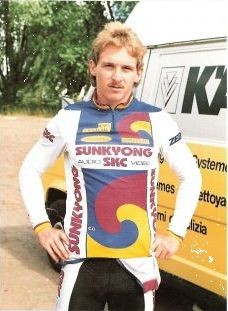
“I’d been racing pro in the US for several years and that was in the days when you had the amateur Pursuit over four kilometres and the pros over five kilometres.
“There were fewer events back then, no Team Sprint or Madison so the events that there were carried more prestige – everyone knew who the World Pro Sprint and Pursuit Champions were.
“I was in a good mental state for those Worlds, I had confidence and knew what I had to do – but Moreau the Frenchman was just better on the day.”
And another silver in 1992 this time behind McCarthy.
“I was team mates with Mike on the Sunkyong team in ’87 and ’88, we used to travel round the country together to races so I knew his capabilities as an athlete.
“And whilst I’m not making excuses or expressing regret, if I had my time over I wouldn’t have ridden the Lotus bike.
“When I chose to ride it I began to understand Chris Boardman’s frustrations when he won in Barcelona, the emphasis was on the bike and not the man riding it.
“I believe Chris would still have won in Barcelona without the Lotus.
“I found it just too rigid, especially on narrow section tubulars at 220 psi, it bounced all over the place and I struggled to hold my position.
“The bike I rode the year before was a carbon Kestrel [some readers will remember triathlete turned Scottish time trial champion, John O’Donovan used to ride a Kestrel road machine back in the late 80’s/early 90’s, ed.] which had a bit of flex to it.
“It was comfortable and easy to hold your position on.
“If you look at videos of me riding the Worlds in ’91 I was very smooth at my preferred cadence of 126/128 rpm.
“But as I said given the information I had at the time I would still ride the Lotus.”
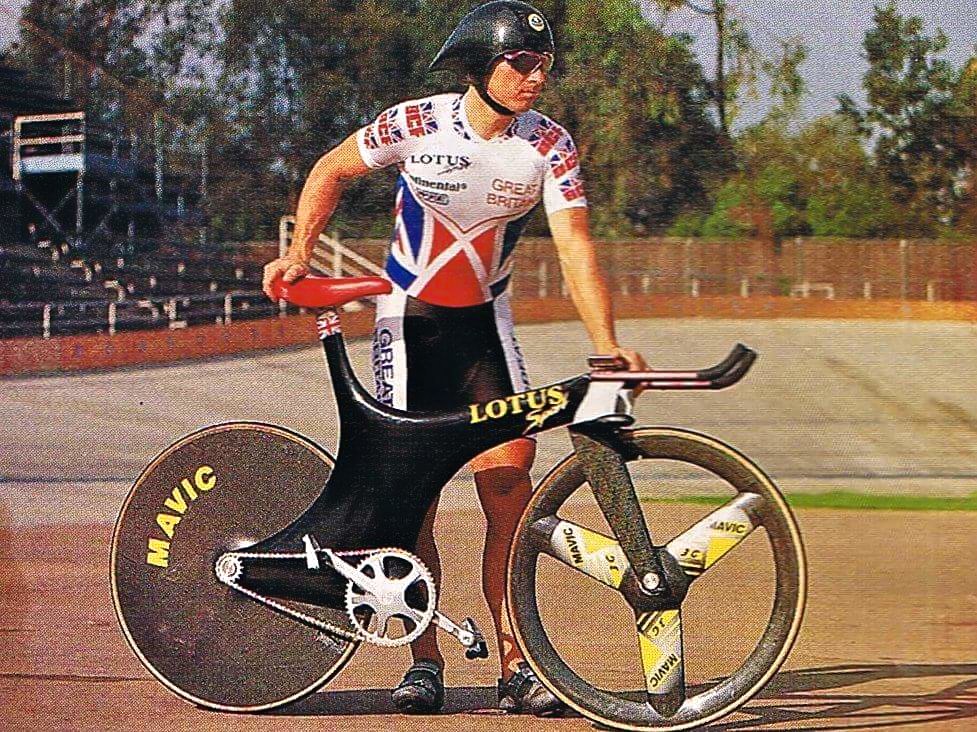
The 1993 Worlds saw you qualify fourth fastest but not get to ride for bronze?
“That was the first year of the ‘open’ Worlds with no distinction between amateurs and professionals with the Pursuit distance cut back to four Kilometres.
“Frenchman Ermenault qualified fastest from Graeme Obree, Chris Boardman and me.
“The UCI was experimenting with formats for the race; the 16 qualifiers were split into four groups.
“The top four from qualifying contested the semi-finals with the two winners riding for gold and silver.
“But bronze went to the fastest semi loser or one of the other 12 from qualifying who rode in six heats, against each other.
“I’d been sick coming in to the Worlds and whilst I managed a good qualifying round my recovery wasn’t there and I lost to Ermenault in the semis but somehow ended up ninth in the official result – but I still consider myself fourth in that competition.
“I was disappointed not to be on the podium but it was an honour to be part of a Pursuit series where three of the four qualifiers were British.
“You could say it was a great success for the British ‘system’ but Graeme was his own man and I was racing in the USA, Chris was the only one you could say owed it to the British system – but even he was his own man with Peter Keen.”
Did your pursuit performances get you any Six Day contracts?
“I’d actually ridden Sixes before my medals in ’91 and ’92 but found them hard work – and of course you had to be in Europe to ride them so there was the cost of accommodation to consider.
“My best ride was the Moscow Six where until the last day I was lying fourth with Tom Armstrong but the ‘Heads’ must have decided that they couldn’t have two upstarts from the States in the top five so we ended-up seventh.
“I also participated in the Japanese Keirins – that was more fun.”
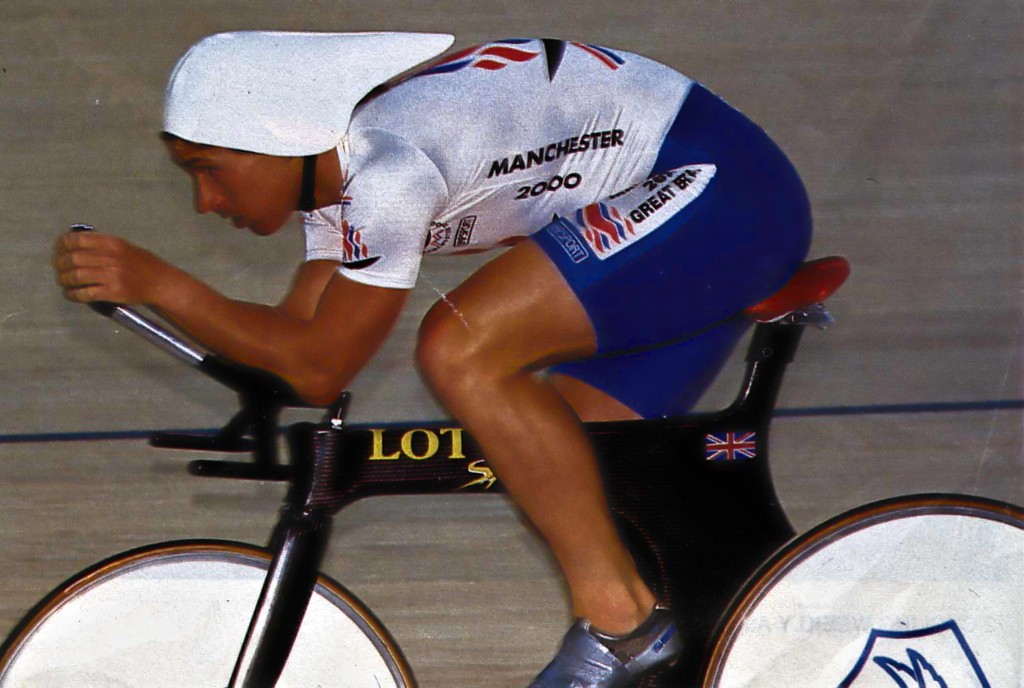
Back on the podium at the Commonwealth Games, 12 years later; silver to Brad McGee in 1994.
“That was a complicated one; I’d decided to go down the ‘Obree position route’ but at the Colorado Springs World Cup prior to the Games they wouldn’t let me ride.
“I took the UCI rule book to the chief commissaire and asked him to show me the rule which forbade me riding in that position.
“He wouldn’t even look at the book.
“I went to the line and the starting judge wouldn’t let me start, I asked him the same thing; ‘show me the rule that says I can’t ride in this position.’
“He couldn’t but refused to allow me to start.
“I phoned back to the UK to warn Graeme what was going on and I had to scrap my Worlds plans which were all centred on riding in that position.
“I had to organise another bike and it obviously wasn’t the best preparation for the Games.
“But McGee was a top pursuiter and it was another Commonwealth Games silver for me.”
In Part Two of the interview we’ll talk about Shaun’s third Commonwealth Games silver, professional life in the States and his specialisation in ‘all things altitude.’


